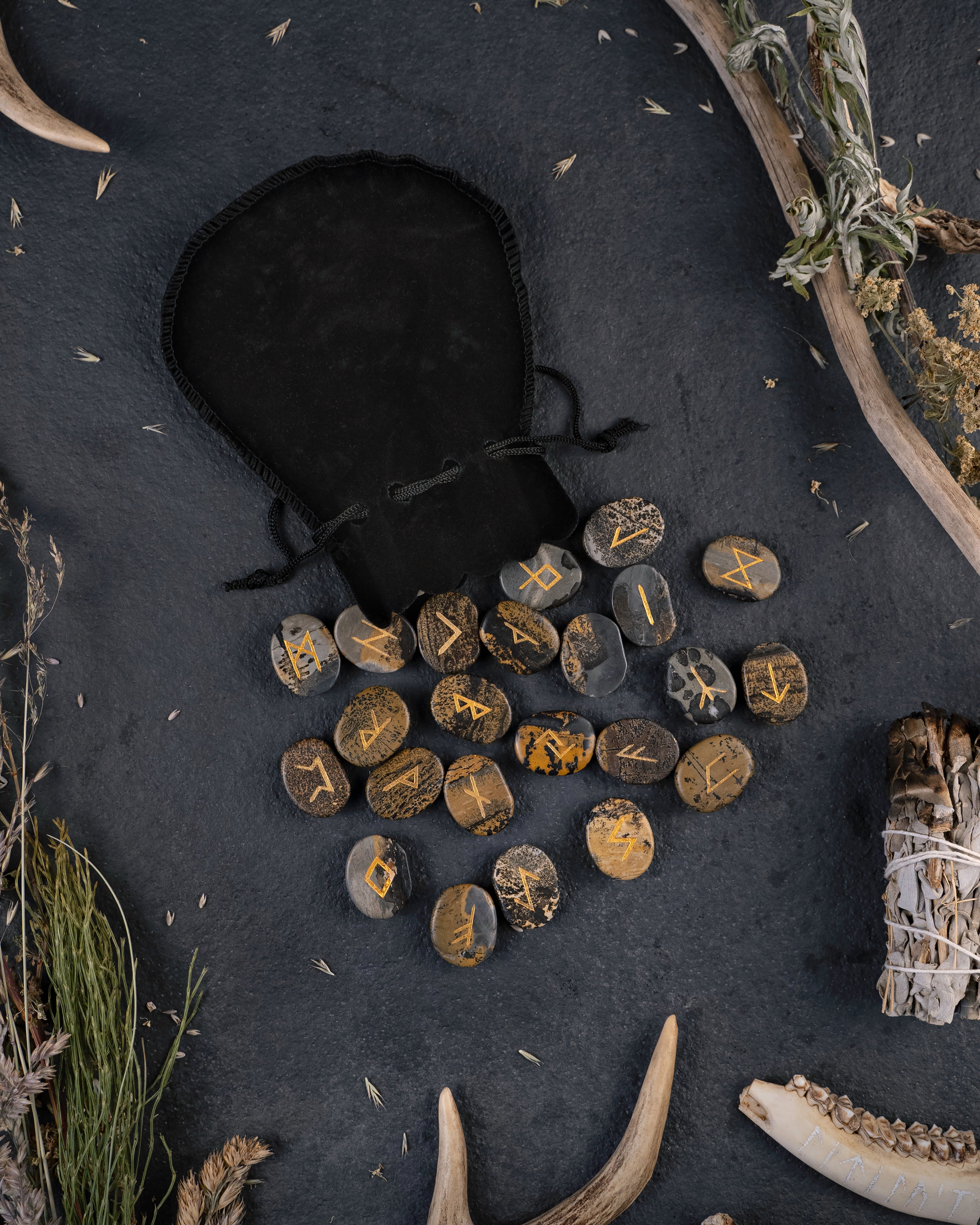
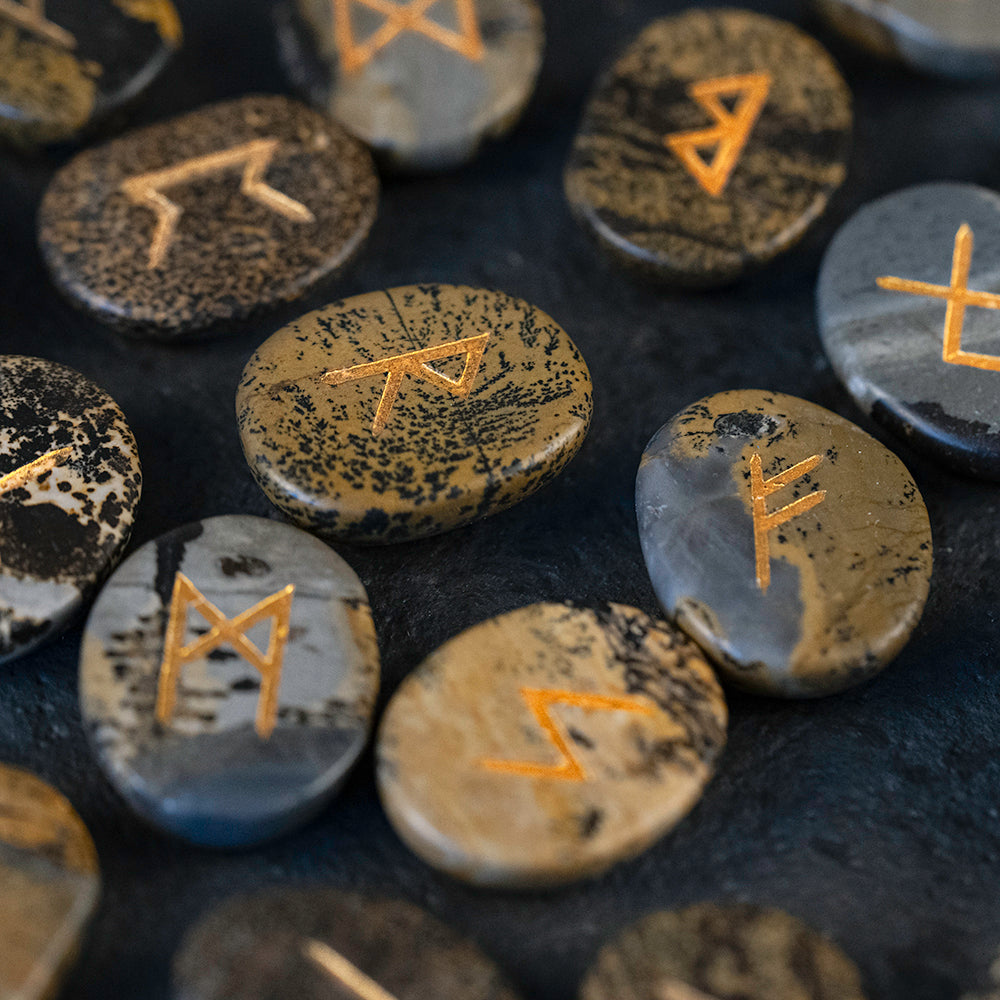
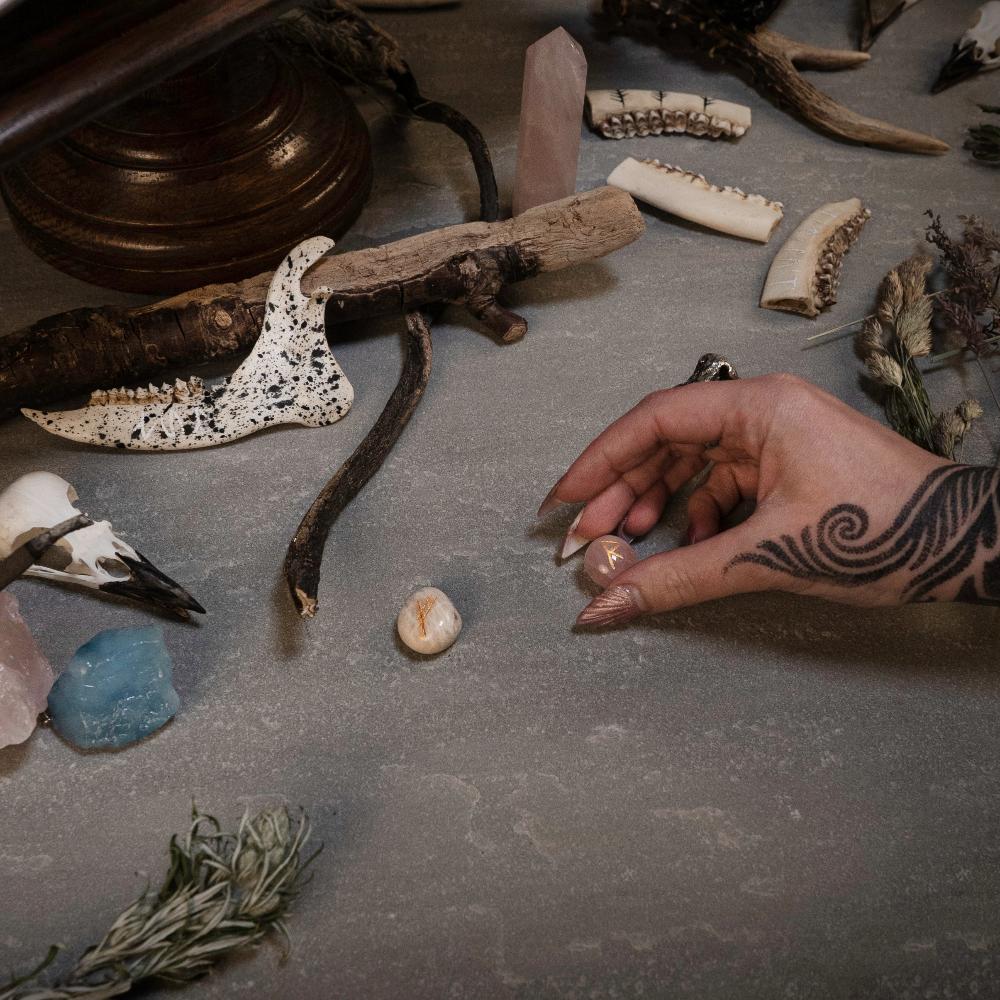
TO CAST, TO QUESTION, TO LISTEN
Runes will give you answers — if you know how to ask them. Whether you use them in ritual, study, or spellwork, our rune stones are carved to help you gain wisdom and protection.
HOW TO DO RUNE READINGS
Whether you're using one rune or the full set, here are tried-and-true methods to help you begin:

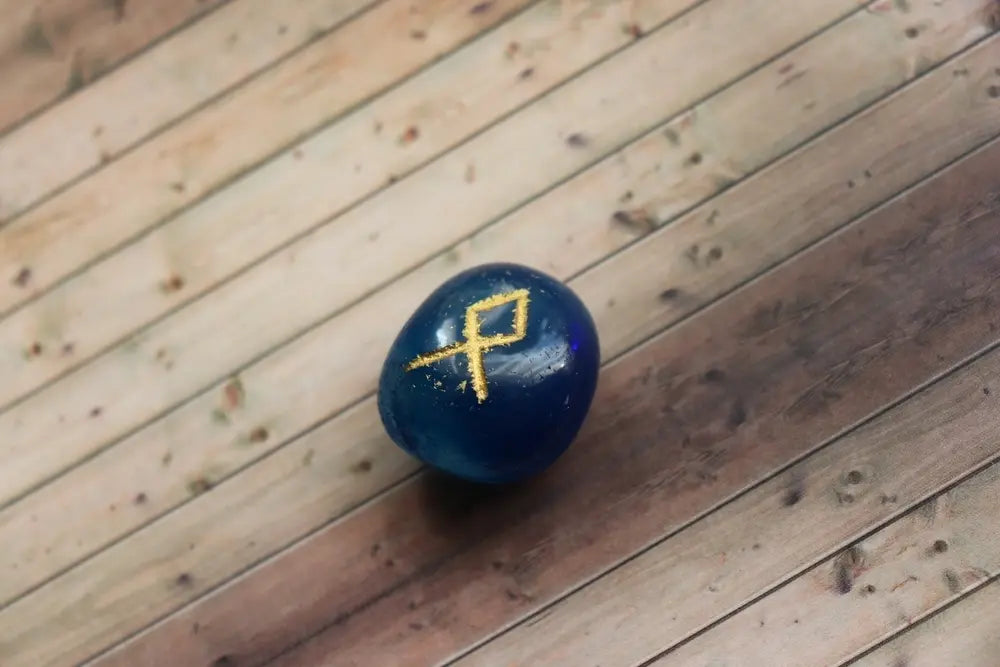
1. SINGLE RUNE DRAW (DAILY INSIGHT)
- Relax your mind and state your question.
- Draw one rune stone from the bag without looking, then read the rune symbol.
- Reflect on the rune’s meaning and how it relates to your question.
This method is ideal for quick clarity or a daily prompt.

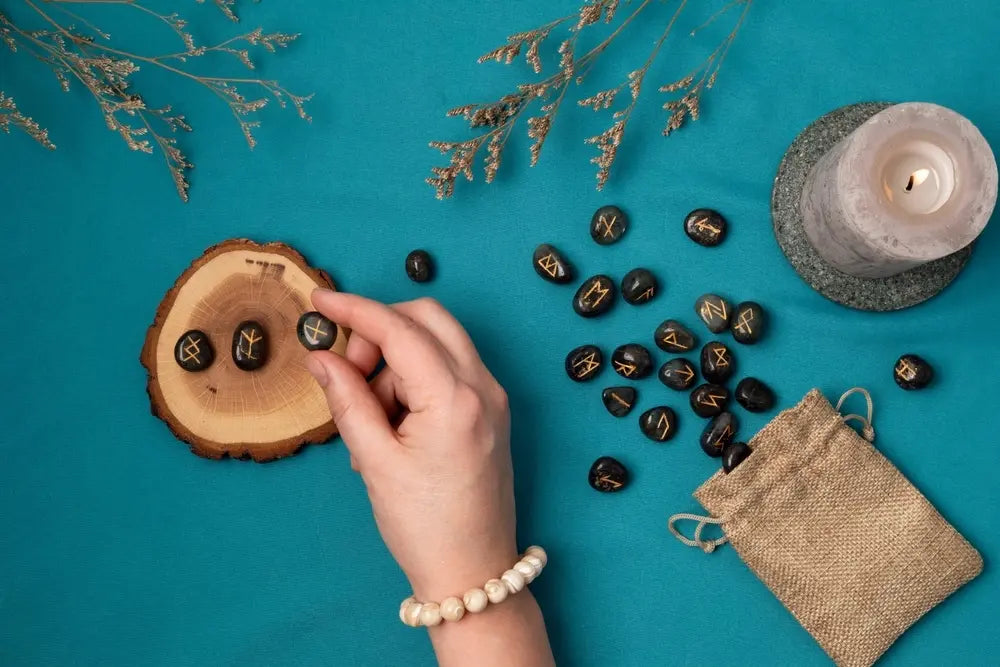
2. THREE‑RUNE SPREAD (STRUCTURE + CLARITY)
Draw three stones, again without looking, and lay them out left to right.
- Rune 1 = the situation or question
- Rune 2 = the obstacle or challenge
- Rune 3 = potential outcome or guidance
This rune casting method offers narrative structure while keeping the session concise and accessible.

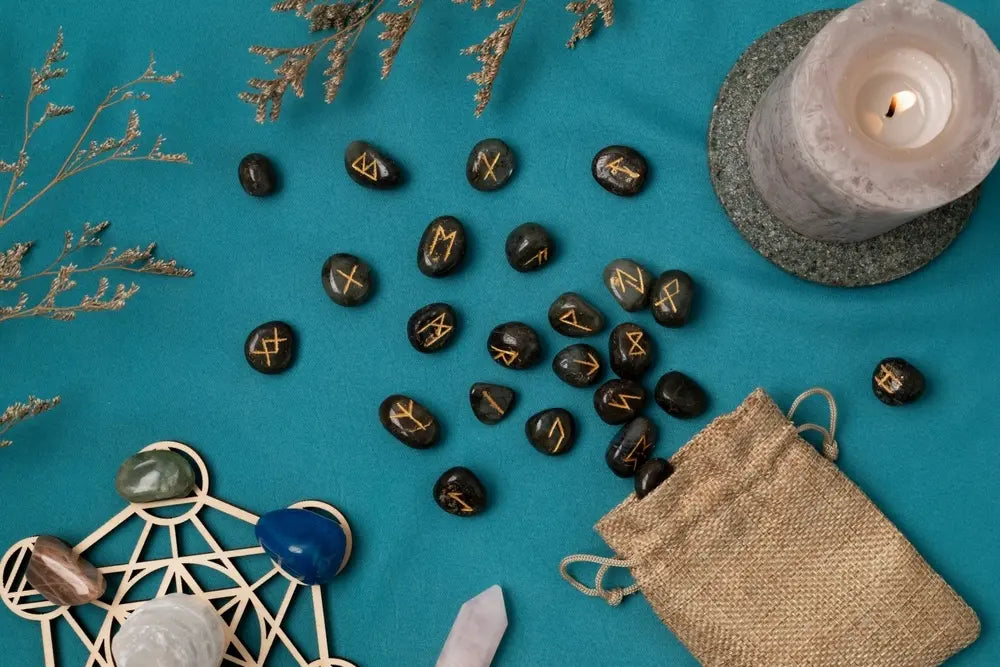
3. FULL CASTING (ADVANCED RELATIONSHIPS)
- Scatter the rune stones across a clean cloth or surface.
- Focus on stones that land face‑up and observe their arrangement.
- Interpret proximity, overlapping, and directional patterns.
This casting divination runes method is best for in-depth questions or thematic readings. Please be aware that this is an intuitive art, and it is typical to develop unique methods and habits in your own castings and readings.
FREQUENTLY ASKED QUESTIONS ABOUT RUNE STONES
What makes Northern Black’s rune stones stand out?
Our rune stones are carved from beautiful grey and green marble, reminiscent of the strata of Scandinavian granite, specifically chosen by Isar Oakmund for its feel, and for the strong visual connection to both sky and sea of the Baltic region. They feature the classic Elder Futhark set of 24 runes. Each set is hand-finished to be durable, tactile, and visually grounded in Norse tradition. They’re designed for use and built to be tools rather than trinkets.
Are these rune stones historically accurate?
Yes. We adhere to the Elder Futhark, the oldest known runic alphabet used by Germanic tribes between the 2nd and 8th centuries CE. There are variations to some runes within the Elder Futhark, but we have crafted this set specifically to our liking.
While there's no direct historical proof of rune divination, runes were regarded as symbols of secret power and used for guidance throughout early Germanic society.
How are the runes named and organised?
The 24 runes are arranged into three groups (ætts) of eight, each linking to specific themes and deities in reconstructed Proto‑Germanic naming traditions. These names shape their symbolic meanings and inform how they’re interpreted in readings. Learn more in our book: RUNES, SIGILS & BIND RUNES.
Can beginners use them?
Absolutely. Northern Black rune stones are crafted for both newcomers and experienced practitioners. Paired with one of our rune books or this guide, they make a solid foundation for learning rune casting and interpretation.
